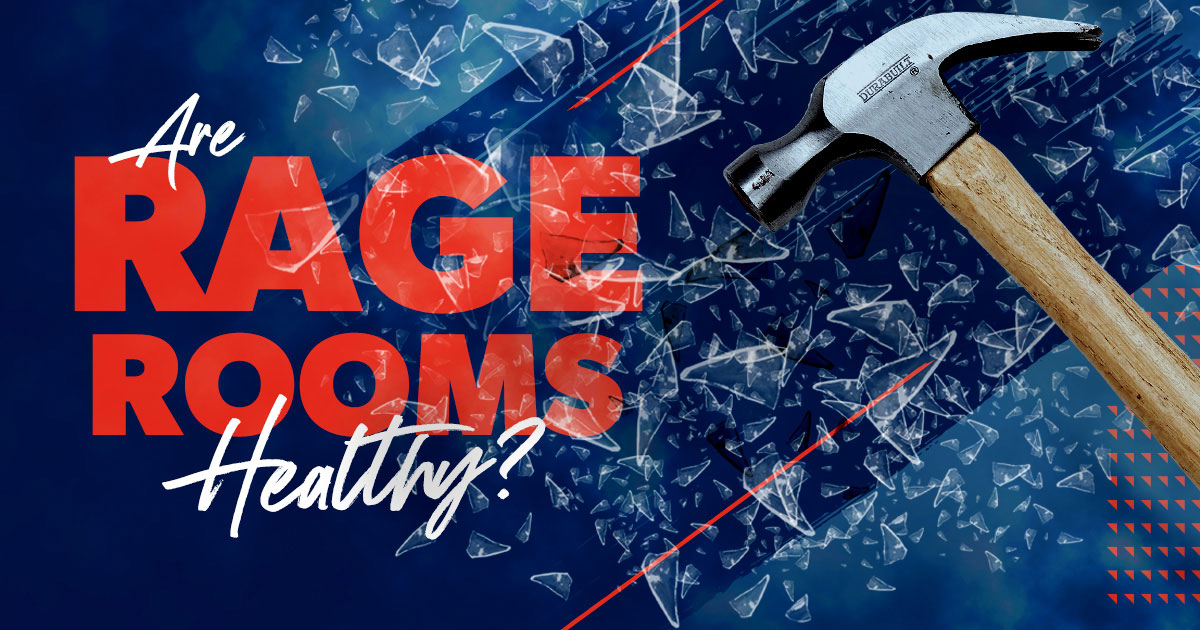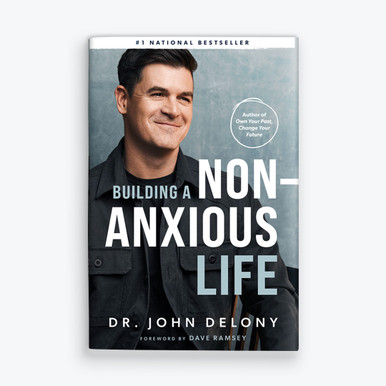What Are Rage Rooms, and Do They Help With Stress Relief?
7 Min Read | May 5, 2025

Key Takeaways
- Rage rooms are places where you pay to smash things like old dishes and electronics as a way to blow off steam. This might feel good in the moment—but it doesn’t fix the problem.
- Learn to process anger in healthy ways. Talk to a trusted friend, go for a walk, journal, find a good counselor—do something that helps you work through it, not just explode it.
- Don’t let your emotions control you. You don’t have to stay stuck in anger. Choose healing over just blowing off steam.
Rage rooms. Smash rooms. Anger rooms. You may have heard about the latest fad in anger management on the news or even in your local city. Rage rooms (and other similiar businesses) promise to help us deal with our anger by “getting it out.” And after a few years of political turmoil, economic chaos, rising gas-prices and Covid mayhem, a place that encourages us to let loose and release our anger sounds like a godsend.
But behind the catchy business names and promises of relief, we have to ask an important question: What are rage rooms, and are they healthy for stress relief? Paying to demolish old dishes, electronics and glassware might look (and feel) like the perfect solution to let off steam—but, unfortunately, anger can’t be magically released by getting even more worked up.
In this article, we’re going to explore why rage rooms simply aren’t the best option for dealing with anger or rage. More importantly, we’re going to walk through some positive (and proven) alternative ways of feeling, managing and working with stress, anger and sadness.
How Do Rage Rooms Work, and Why Do People Use Them?
People visit rage rooms so they can go wild. Rage rooms allow us to buck the rules of a polite, orderly society by smashing everyday stuff with crowbars and hammers and baseball bats. I’m not going to lie . . . I’ve done something similar in the past, and it’s a lot of fun. The problem comes when businesses sell these activities as a way to improve our lives, deal with anger, and become less raged out. Because these results simply don’t happen.
So, how do rage rooms work? Well, they have a simple setup. You make an appointment just like any other service. Slot times vary, but they’re usually around 15 to 20 minutes. When you arrive at the rage room, you sign a safety waiver and put on protective gear like a hard hat, goggles and gloves. Then you’re set loose in a private room with reinforced walls and given pieces of junk like broken or outdated household items and your smash tool of choice. Then, it’s go-time. No holds barred.
A quick 15-minute frenzy of smashing toasters and TVs with a bat or hurling dinner plates against the wall with the rage of a Pantera concert inside a blender might sound like the ultimate stress relief. But the long-term effects of dealing with anger by breaking things can create a new, automatic response of losing control. Simply put: Dealing with anger by smashing things at a rage room will lead to you being angrier and more aggressive more often.
Free Anxiety Test
This test will help you get clarity on the situations that could be contributing to your feelings of stress, anxiety and burnout.
Are Rage Rooms Good for You?
Unfortunately, no. The evidence around anger, rage and aggression is clear: Dealing with your rage through aggression simply reinforces the rage. Channeling anger and frustration in quick, violent bursts can make this expression your default reaction. What you choose to do after feeling any intense or uncomfortable emotion becomes your default coping mechanism.
Want to build a non-anxious life? Learn how in Dr. John Delony’s new book.
If you choose to be angry when someone cuts you off in traffic, or to become enraged at the umpire at your daughter’s Little League game, or to throw a temper tantrum when you get a paper cut, your body wants to make these responses automatic in future incidents. So, the next time you get cranky or frustrated, your body will respond with the same physical, aggressive response.
By the way, if you have children, they’ll see your responses and learn that adults handle anger by smashing things, screaming at people, or losing their minds. And they’ll start to act the same way. This needs to stop.
As I mentioned, rage rooms are fun. But when used as a mental health tool, they can make the problem of anger or rage worse. There are much healthier ways to manage anger, heal from our rage, or deal with anxiety beyond throwing a fit.
Healthy Ways to Handle Rage
Let’s define what we mean by anger. Anger is simply our body’s way of getting our attention and pointing us toward something we care about. For example, I care deeply about my children’s safety. When some distracted dude roars down our residential street at twice the speed limit, I get angry because that driver is putting my kids in danger.
Now, what’s a healthy response when we get frustrated? Feel it. Own it. Instead of trying to “get it out,” sit in it. Say out loud, “I’m really frustrated.” Or, “I’m angry.” Or, “I’m raging inside.” Acknowledge out loud what you feel and why you feel that way, and let your body be in the moment. Be curious about why you’re angry, and be specific about why your body is trying to get your attention. You may want to smash something or yell at someone in an effort to feel better.
Don’t.
If you still need to discharge that energy and emotion, choose something better for yourself than a cheap, violent thrill. Here are some quick, effective options that can help you let off steam and handle rage in a healthy way:
- Take a walk, lift weights, or find other ways to move your body. I’m convinced that any relief people feel after visiting a rage room is because of the exercise involved—swinging hammers, throwing dishes, and crashing weighted crowbars—not the aggressive behavior.
- Write it down. Writing or journaling is clarifying and expressive. When you write down what you’re angry about, your body and mind process and feel your feelings. When you write down your feelings, be specific. Be curious. And demand evidence from them. Are they true? Or have you created stories and blame around your feelings to justify your anger? It’s much easier to see the truth for what it is when you see your thoughts on the page.
- Call someone you care about and have a real, live conversation. We need connection. We can’t do life alone. When you do call someone, tell them, “I don’t need solutions. I just need to let you know what’s going on.”
- Meditate or pray. You might just find that the things you’re getting worked up over aren’t as big of a deal as you thought. Even a simple three-minute break can help clear your head.
- Practice deep breathing. This is one of the fastest ways you can center yourself in your body and begin to regulate your stress response.
- Find a good counselor or therapist. When you’re dealing with rage or anxiety, having a professional walk alongside you can make all the difference in your healing. The research is clear—getting to the root of anger can make a powerful difference in how you feel and express anger in the future.
We’re always training our body for how we want it to respond to challenges. Instead of training your body to respond to anger and aggression with more anger and aggression, train your body to reach for healthy stress relief options. Reach toward peace, patience and kindness even when the wheels are falling off. This isn’t about being passive or weak—it’s about teaching your body to remain calm, alert and in control. Remember: How you respond is a choice, and you have more power than you think.
Practical Steps to Help You Heal
Taking ownership of your healing, spending time in community, and choosing to be well are the first steps to becoming healthy and whole. Not smashing things. Not spending money on a 15-minute blitz through a temper tantrum room. Instead, you can choose to respond to stress and bad feelings in ways that support your well-being and health—but rage rooms aren’t part of that equation.
If you need help getting started on your path to healing, check out my new book, Building a Non-Anxious Life. I give people just like you and me practical tools to better respond to whatever life throws at you and build a more peaceful, joyful, non-anxious life. Start reading for free today.




